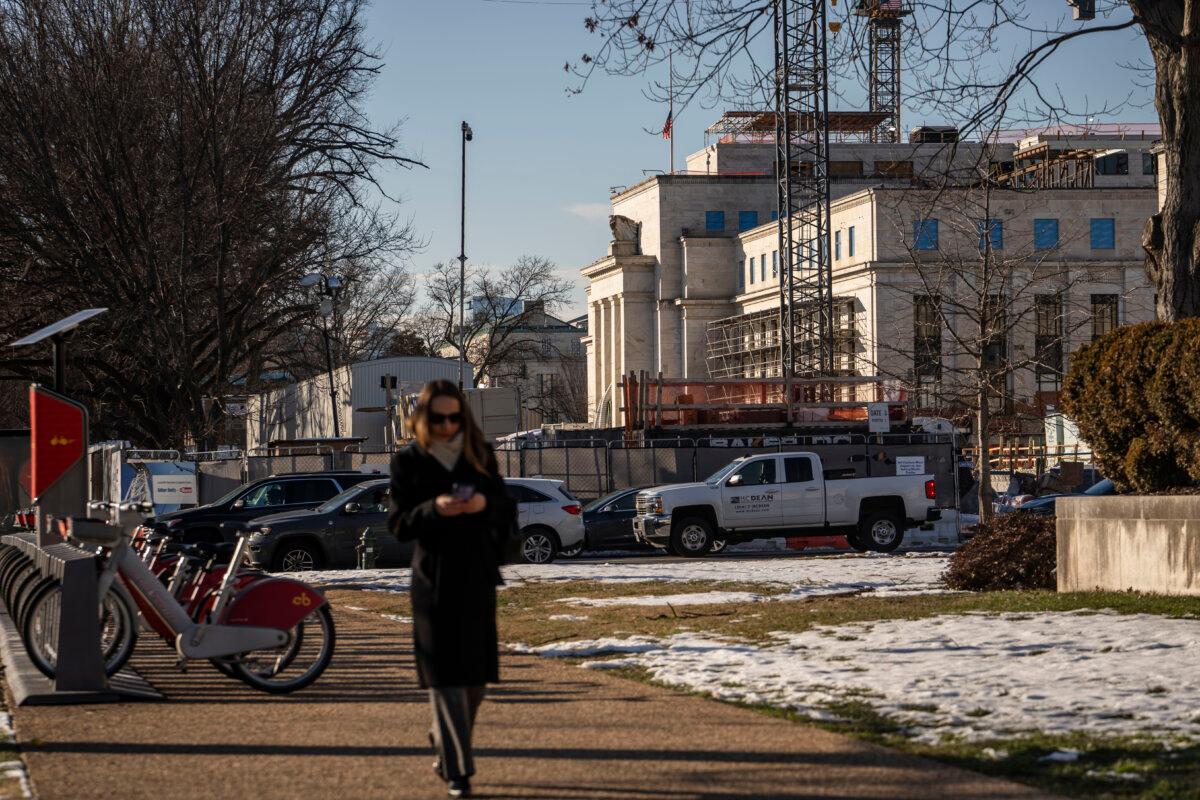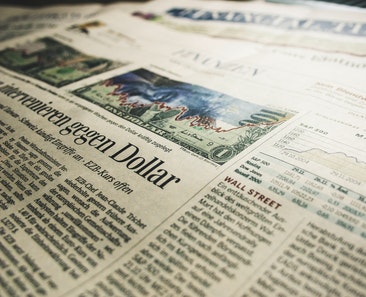The Dollar Dilemma During Trump 2.0

By Andrew Moran
The U.S. dollar suffered its worst first-half year performance since 1973.
This year, the U.S. dollar index, a gauge of the buck against a weighted basket of currencies including the euro and the Japanese yen, has declined by almost 11 percent to its lowest level in three years.
Five decades ago, the greenback was adversely affected by multiple factors, such as the collapse of the Bretton Woods system, rampant price inflation, an oil crisis, and capital outflows.
More than 50 years later, the United States is facing other challenges, including an administration pursuing a transformation of global trade and concerns surrounding Washington’s fiscal health.
The debate in currency markets centers on whether the dollar’s decline is structural or cyclical.
Winds of Change
Following President Donald Trump’s unveiling of the contours of his sweeping global tariff agenda in April, the U.S. dollar underwent fundamental changes, with international investors attempting to unravel the decades-long dominance of the dollar.
“The world is changing,” AMG National Trust said in a June 26 report.
“Following a period of relatively stable exchange rates of the last decade and American stocks’ outperformance, we might now be transitioning to a more volatile regime where the U.S. dominance is not as straightforward.”
Economic observers stated that the sharp selloff in the dollar and the rise in Treasury yields suggested that U.S. assets were no longer attractive to global investors.
Appearing on CNBC’s “Squawk Box” at the height of tariff-driven uncertainty, Neel Kashkari, president of the Federal Reserve Bank of Minneapolis, argued that market trends might be showing that the United States is no longer the world’s safest and best place to invest.
“Normally, when you see big tariff increases, I would have expected the dollar to go up,” Kashkari said during the April 11 interview. “The fact that the dollar is going down at the same time, I think, lends some more credibility to the story of investor preferences shifting.”
Indeed, considerable uncertainty remains regarding the president’s tariffs.
Trump recently confirmed that his administration would send letters to trading partners ahead of the July 9 deadline for reciprocal tariffs. This means tariff rates could return to April 2 levels, ranging from 11 percent to 50 percent.
While the president engages in a long-term campaign to overhaul trade, various data points underscore the dollar’s status as the heavyweight champion of global markets.
Data from the Society for Worldwide Interbank Financial Telecommunication (SWIFT), for example, reveal that the dollar accounts for half of global payments. International Monetary Fund data suggest that the dollar represents about 60 percent of global reserves.
When You’re Smiling
Since then, however, experts say that the dollar’s persistent losses over the past several weeks could be a result of near- or medium-term fluctuations, driven by expectations of looser Federal Reserve policy and economic uncertainty.
While the Trump administration is perturbed by the Federal Reserve not lowering interest rates, the U.S. central bank has signaled that it will follow through on two quarter-point rate cuts to the key policy rate. For now, it is a matter of timing—investors overwhelmingly expect action in September.
The president’s recent comments to the media that he has a few candidates in mind to replace Federal Reserve Chair Jerome Powell has also weighed on the dollar, says Ipek Ozkardeskaya, a senior market analyst at Swissquote Bank.

“The U.S. Dollar Index fell to a fresh three-year low … partly on reports that Trump plans to nominate the next Fed chair as soon as next fall—an effort to soften Powell’s cautious stance and dent the Fed’s credibility at a moment when investor confidence in the dollar and U.S. debt is weakening,” Ozkardeskaya said in a note emailed to The Epoch Times.
“Any positive trade developments could partially unwind the dollar’s trade-related losses and cap the majors’ advance against the greenback.”
The president has not named Powell’s successor, but the betting markets have former Federal Reserve Governor Kevin Warsh and current Governor Christopher Waller as the top candidates. National Economic Council Director Kevin Hassett, economist Judy Shelton, and Treasury Secretary Scott Bessent are also contenders.
Meanwhile, despite widespread consternation about the economy’s health amid higher tariff rates, conditions remain solid: Inflation is hovering slightly above the Federal Reserve’s 2 percent target, the labor market is intact, and growth prospects are strong for the second quarter.
In addition, the Bank for International Settlements—a central bank for central banks—recently published a paper that studied the dollar’s dramatic decline.
Economists concluded that currency hedging by foreign investors holding U.S. dollar securities—a strategy designed to shield against hefty losses fueled by fluctuations in foreign exchange rates—contributed substantially to the greenback’s weakness in April and May.
“When the U.S. dollar depreciated in early April 2025, investors faced losses on the unhedged portion of their dollar portfolio,” the paper stated. “To mitigate these losses, some opted to increase their hedge ratio. This amplified depreciation pressures on the dollar.”
Whether this will persist heading into the second half of the year remains to be seen.
Examining the buck, meanwhile, could suggest the currency is oversold.
Gurpreet Garewal, the co-head of public investing market insights at Goldman Sachs Asset Management, believes the dollar decline is overdone and the “dollar smile” could return.
A dollar smile is a theory in currency economics that shapes the currency’s performance.
When the world is in chaos, the dollar tends to strengthen as investors seek shelter from the turmoil. The dollar will weaken when conditions are sluggish. The dollar will surge when the U.S. economy is booming and outperforming its global counterparts.
“Interestingly, while U.S. stocks have more than recovered from their tariff drop, the dollar has not,” Garewal said in a June 13 video message.
“Global investors have become more concerned about U.S. policy and see improving opportunities elsewhere. Add to this the idea that the dollar may be overvalued, and the case against the dollar is clear. But we would say that this case has been somewhat overstated.”
The dollar hegemony might have taken a hit, but the international reserve currency remains on top of its throne, she added.
‘Mar-a-Lago Accord’
Trump and senior administration officials have clearly stated that they want to keep the dollar as the global reserve currency and maintain the strong-dollar policy that began in the 1990s.
However, to bolster U.S. exports to the rest of the world, a weaker dollar might be advantageous to the president’s broader trade pursuits.
Since returning to the White House, economic experts have speculated on the idea of a “Mar-a-Lago Accord,” a nod to the Plaza Accord in 1985.
Forty years ago, major U.S. trading partners agreed to depreciate the dollar by coordinating currency interventions and imposing domestic fiscal and monetary policy adjustments.
Four decades later, the administration might embark on a similar crusade to weaken the dollar and pump up foreign currencies, making American products more attractive and cheaper on the world stage, thereby allowing the United States to reduce its trade deficit.
“In short, the idea is that the U.S. provides the world with security, and in return, the rest of the world helps push the dollar down in order to grow the U.S. manufacturing sector,” Torsten Slok, chief economist at Apollo, said in a note emailed to The Epoch Times.

One senior administration official opined on the subject before obtaining a position at the White House.
Stephen Miran, the head of Trump’s Council of Economic Advisers, published a lengthy November 2024 paper titled, “A User’s Guide to Restructuring the Global Trading System.” Miran examined reforms to global commerce and the connection between economic imbalances and the overvaluation of the dollar.
“Such a Mar-a-Lago Accord gives form to a twenty-first century version of a multilateral currency agreement,” Miran wrote when he was a strategist at Hudson Bay Capital.
“President Trump will want foreigners to help pay for the security zone provided by the United States. A reduction in the value of the dollar helps create manufacturing jobs in America and reallocates aggregate demand from the rest of the world to the U.S.”
Treasury Secretary Scott Bessent, a billionaire hedge fund manager with experience in currency markets, has consistently dismissed media questions regarding the idea of a ‘Mar-a-Lago Accord.” Instead, he has reiterated his support for a strong dollar.
Big Beautiful Bill
Depending on the economic outcome of the reconciliation package—known as the One Big Beautiful Bill—it could be a boon for the U.S. dollar, or it could be another hurdle for the buck to overcome.
The legislation’s supporters say that it will boost economic output, reduce the deficit, and stimulate growth without causing inflation to rise.
Critics, on the other hand, argue that it will worsen America’s fiscal outlook and increase the federal government’s interest payments due to investors’ concerns about the bill’s impact on the debt.
Following Moody’s downgrade of the United States’ long-term credit rating this past spring, the U.S. bond market experienced immense volatility, with investors diagnosing fiscal health issues for Uncle Sam. However, even with higher odds of the Big Beautiful Bill passing, the yield on the benchmark 10-year Treasury has declined, suggesting more stability and solid demand.
Consensus among fiscal and monetary policymakers is that the federal government’s fiscal path is unsustainable. If more foreign investors agree with this assessment, they will either request higher yields or turn to alternative assets, applying pressure on the dollar.
Main Street America
How does a strong or weak dollar affect the average American?
For now, a strong dollar makes imports more affordable, thereby enhancing the public’s purchasing power. A strengthening buck can push down dollar-denominated commodities, such as crude oil and natural gas. It can also make traveling abroad cheaper.
At the same time, a weaker dollar can stimulate demand for U.S.-made products in foreign markets, creating more jobs in export industries. In addition, if foreign goods are more expensive at U.S. ports, consumers might be nudged to purchase goods manufactured domestically.
It is a balancing act, or a give-and-take scenario, for businesses and consumers.



